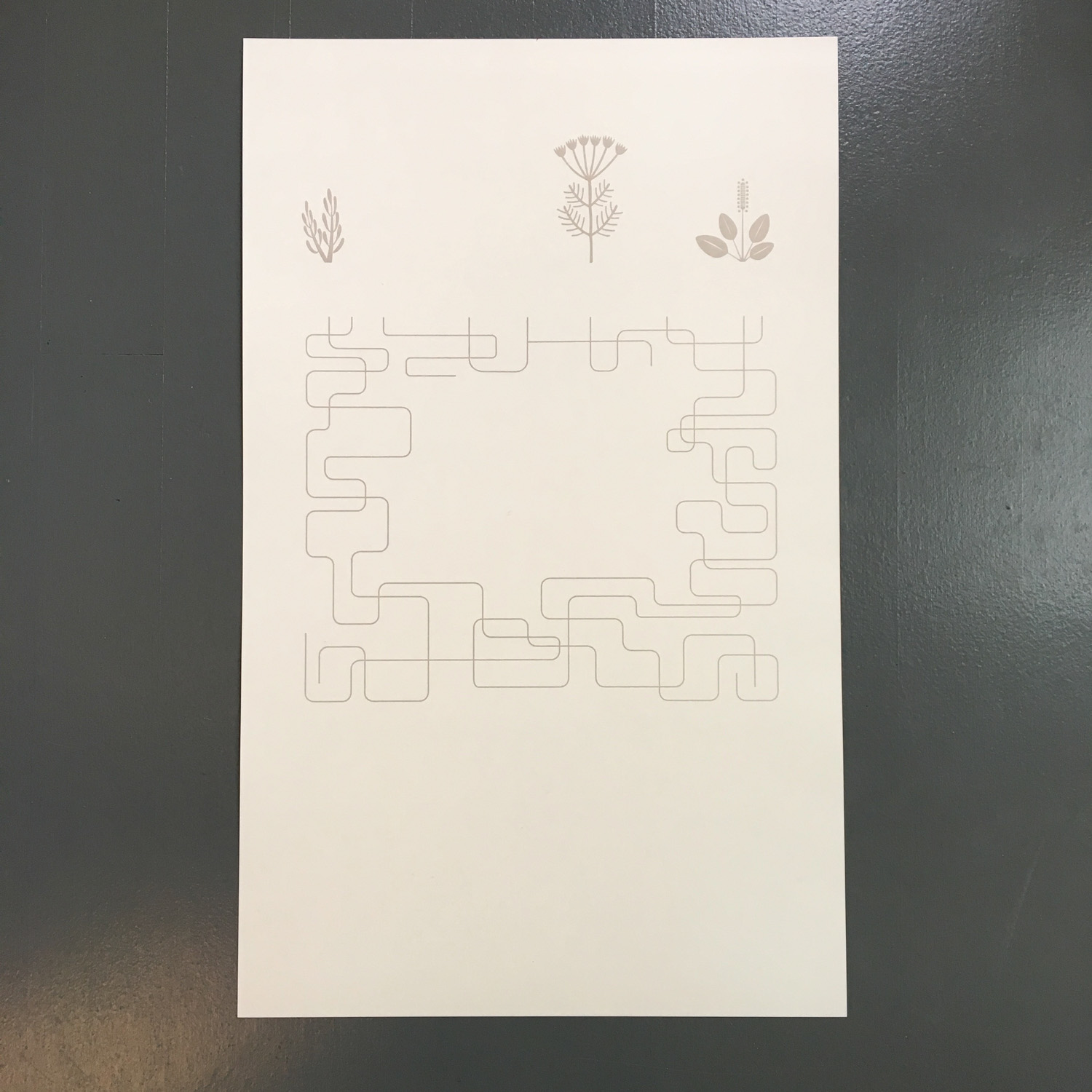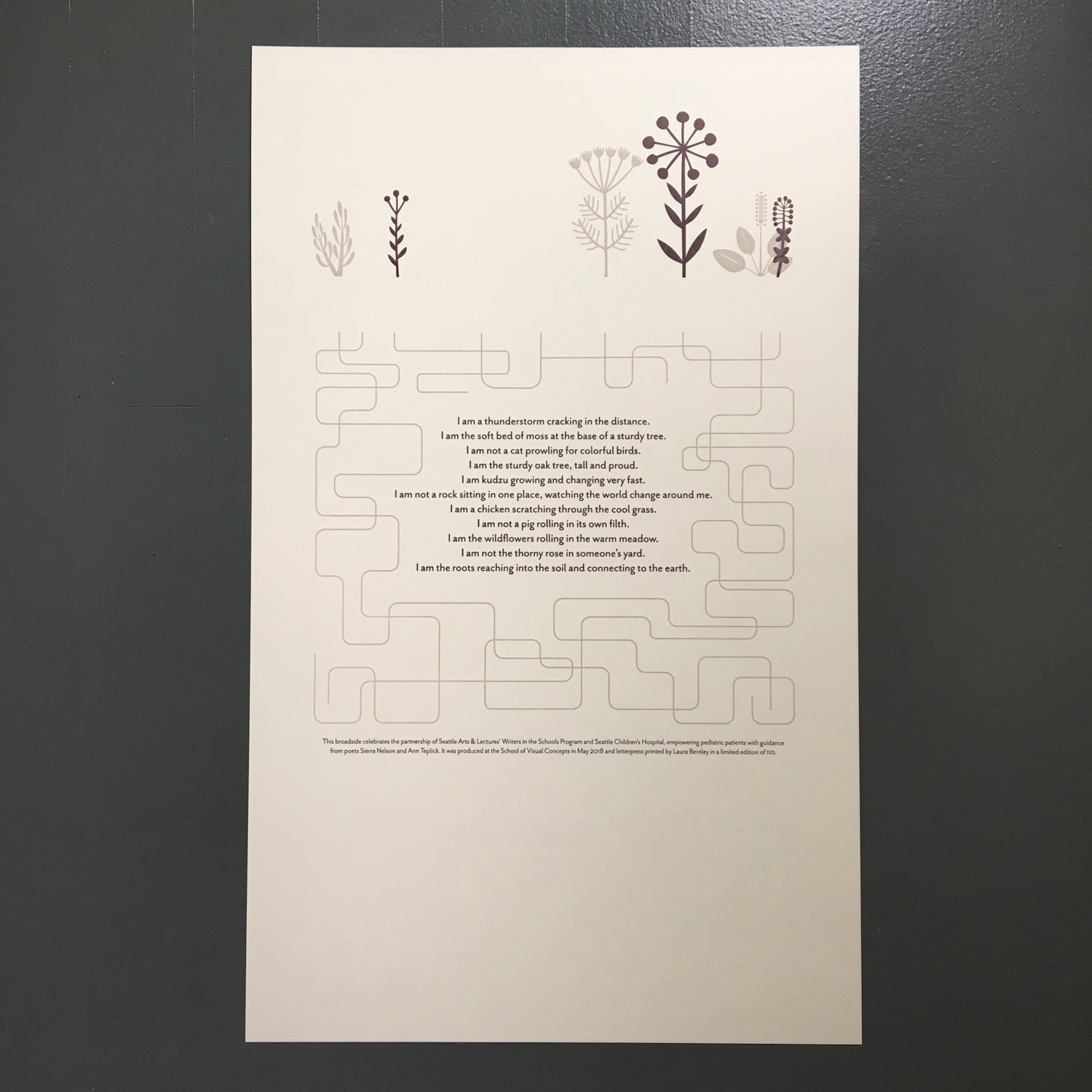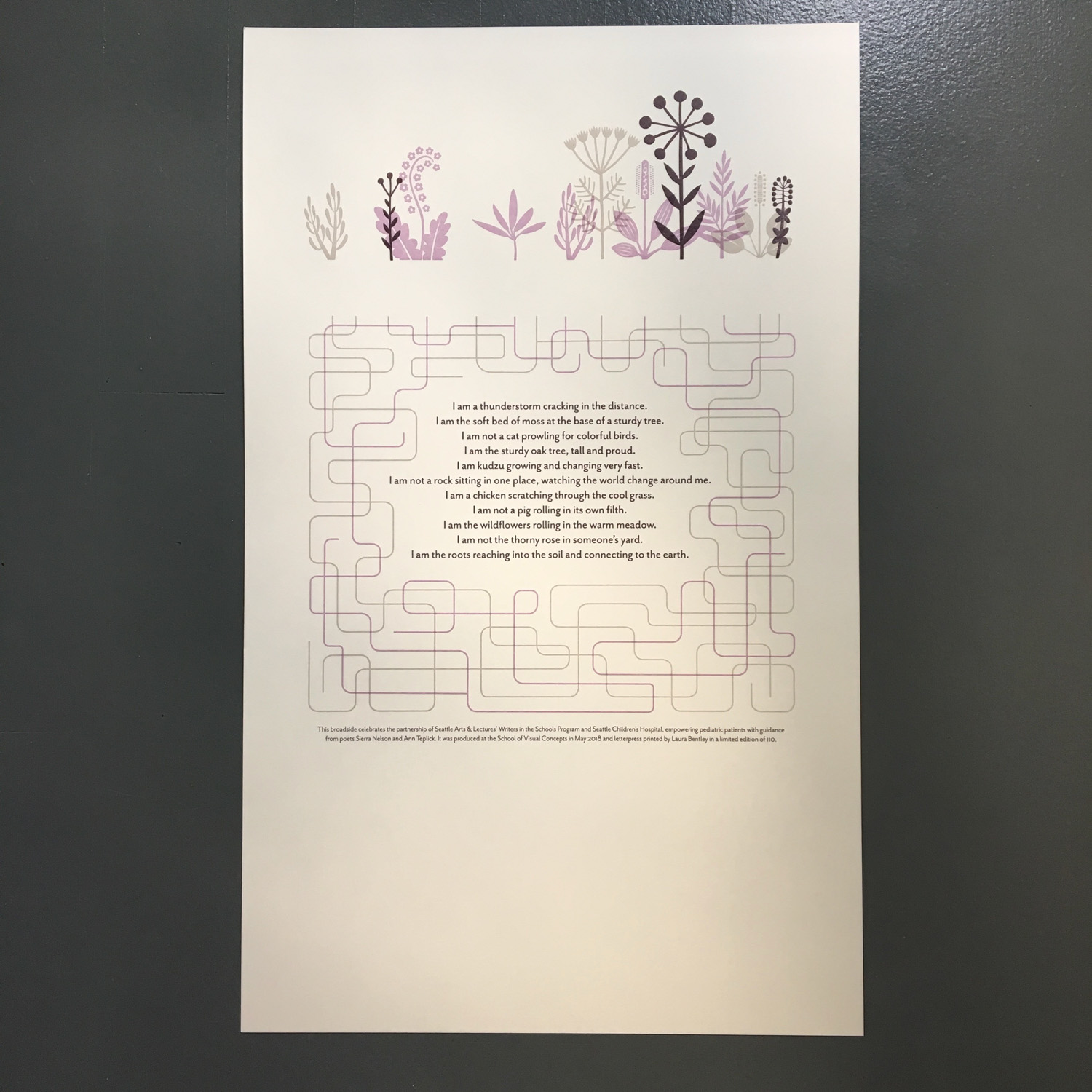Now in its eighth year, this project is a partnership between letterpress printers from the School of Visual Concepts and the Seattle Arts and Lectures’ Writers in the Schools (WITS) program. WITS poets Sierra Nelson and Ann Teplick regularly work with pediatric patients at Seattle Children’s Hospital, helping the young patients write poetry that expresses their individual experiences.
Once a year a select group of poems are chosen to be part of this project. This year 20 poems were matched with letterpress printers who created broadsides then bound in a portfolio.
I received a vivid poem by a 16-year old named Sarah who worked with poet Ann Teplick. For Sarah, her family, and anyone else interested in this program, what follows is the process of how I printed the broadside for this poem.
I was drawn to Sarah’s poem entitled “Roots” because of the nature imagery and in particular the imagery of wildflowers and roots. I often print from handset type, but for this broadside I decided to print from polymer plates which would allow flexibility on choosing imagery for the wildflowers and the roots.
The poem text is named Mrs. Eaves, and the title is the companion sans serif font Mr. Eaves. The foliage and flowers are also from a font— really! The font is called Makalu and is a series of illustrations created by Juraj Chrastina. I chose to draw the roots as a tangle of geometric lines to evoke a mid-century modern feel.
Computer files was sent to Boxcar Press and in return I received a polymer printing plates. We are all so thankful that Boxcar Press donates plates for the Children’s Hospital poetry broadside project, and has done so every year since the start of the program!
The plate is made of a polymer plastic where the image (and the image of type) is a raised surface. The type is reversed on the plate, so that when printed it will be right reading. The plate is mounted on a metal base in the bed of the printing press.
I first printed a light grey color. The printing press rolls the ink onto the plate and then the paper is rolled onto the the plate to print the image.
Each color is printed separately, changing plates each time.
Here's a progression that shows what was printed on the page with each printing pass.
That’s it! Pass four through the press was complete. For an edition of 120, I started with 130 pieces of paper. For those of you counting that meant that 130 pieces of paper through the press four times meant feeding paper through the press 520 times!
Lastly, once the ink had dried, the prints were trimmed down to their final size. Here they are being cut on a paper cutter from the early 1900s.
Here is the final trimmed print and a closeup.
This broadside is just one of twenty that were printed by other letterpress printers in the Seattle area. Sets of the broadsides are put together in portfolios that were bound by the letterpress printers and led by printer and bookbinder Jules Remedios Faye of Stern and Faye, Letterpress Printers.
Thank you Sarah! It was an honor to print your words.
And always an honor to participate in this project. Thanks to poets Sierra Nelson and Ann Teplick who regularly work with these patients and Jenny Wilkson who forged this partnership between Seattle Arts & Lectures and the School of Visual Concepts letterpress community!
















